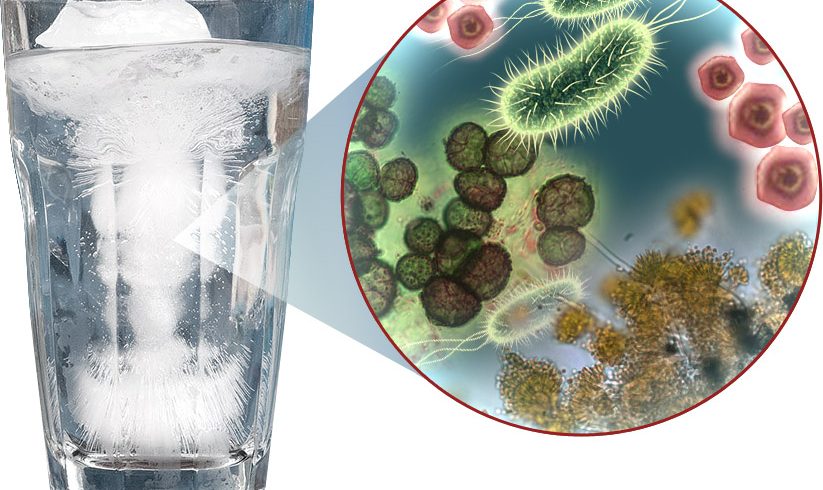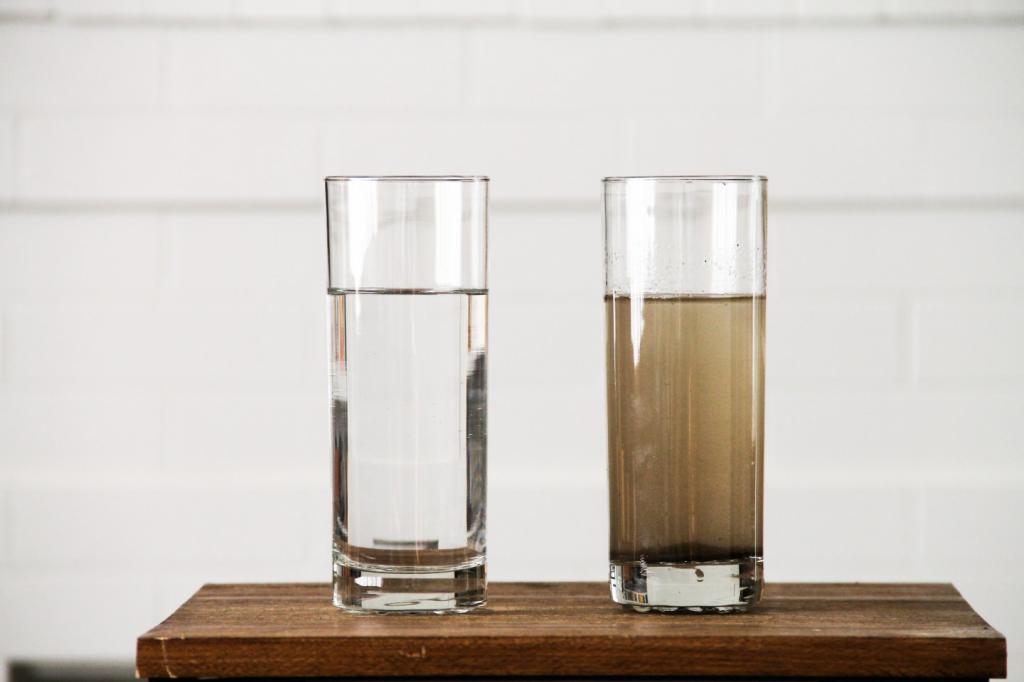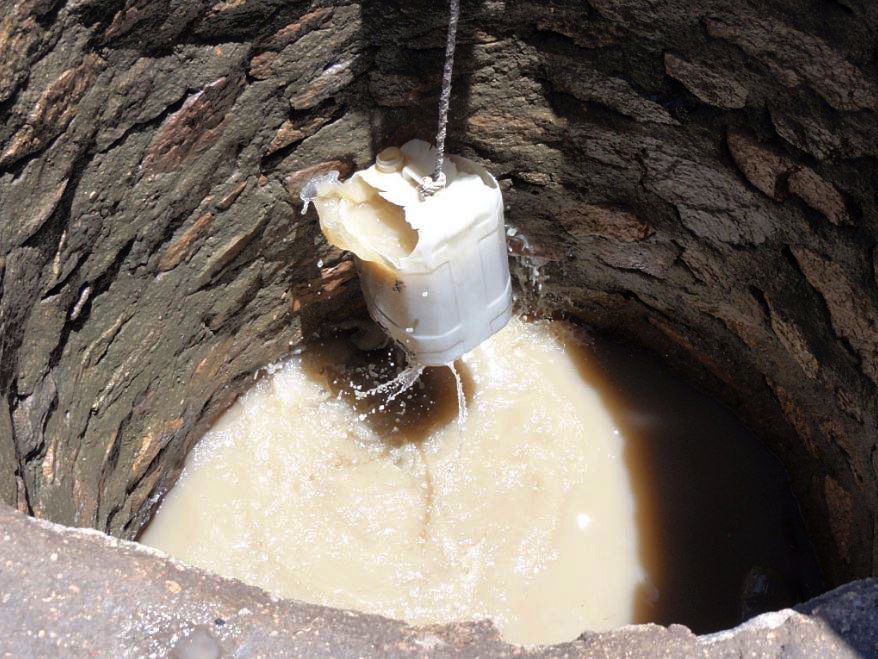Perhaps every owner of a suburban area has a well. Due to the fact that today the quality of treatment of city tap water raises questions more often, and bottled products also often turn out to be ordinary untreated liquid, many begin to think about how to start drinking from their own source.

Hundreds of years ago, well water was indeed considered the cleanest and most beneficial. But today its quality may be doubtful, since industrial production can be nearby, and a septic tank is buried in the ground near neighbors. Therefore, it is worth considering whether to give preference to such a drink.
The benefits of well water
If a fluid reservoir has been dug in accordance with all requirements and hazardous substances do not leak into the soil, then this drink really has a lot of advantages. Unlike tap water, such water is characterized by a high content of useful mineral components.
For example, if we consider the composition of this fluid, then by its biochemical parameters, it is considered the best for the human body. There is no chlorine and chemicals in clean well water, which in large quantities are added by the city sewage treatment plants. This is a natural cool and refreshing liquid that will give energy for a day.

But, only in 30% of 100 such water passes all laboratory tests. Due to the deteriorating environmental situation, the regions where you can safely drink raw well water are becoming smaller. Therefore, in no case should you give preference to such a drink without preliminary laboratory tests.
The presence of nitrates and other harmful components
According to numerous tests in wells, quite dangerous components are most often found. For example, gardeners are often involved in killing insects with pesticides and other chemicals. Through the soil, these substances seep into the well, after which they are sent directly to the human body.
The main danger lies in the fact that the composition of the water can change during the season. Therefore, even if the water passed all the necessary tests at the beginning of summer, this does not mean that by the end of the warm season, chemistry will not begin to accumulate in it.
Nitrates in well water pose a great danger to children. A small organism is not able to fully neutralize these components, which can lead to oxygen starvation of tissues and severe poisoning.

Iron
Many are convinced that the iron in well water is no different from that found in berries and other natural products. This is actually not the case. For example, if a summer resident dug a well next to iron ore deposits, then the composition of the blood after such regular drinking will not change. The fact is that this component is in liquid in an inorganic form.
Gradually, iron will accumulate in the human body. This may well provoke a blockage of arteries, the development of gallstones and many other dangerous ailments. The human body is simply not able to absorb such iron. If you eat a little black currant, then the blood counts will immediately change. This is because in this case we are talking about a healthy, organic iron.
What else is such water dangerous?
The well itself is a closed environment. This means that the worst viruses and bacteria can easily multiply inside. Especially if the owner of the suburban area notes that the temperature of the well water is quite high. If the rings are laid shallow and the fluid is constantly heated by the soil, this will only accelerate the development of an environment favorable for microbes.

In addition, organic components, plants, small animals accidentally drowned, insects, etc., can decompose in a well. Often in the wells there is even a dangerous E. coli. From pathogenic microflora will not protect how deep the rings are installed. Of course, the deeper the water is taken, the cleaner it should be. But, do not forget about the underground currents that thousands of bacteria can bring with them.
How long has the well been used and its technical features
This factor is also important. If stagnant processes occur in a well, then the water in it becomes dangerous not only for drinking, but even when watering or using it as a technical fluid. Under the influence of ultraviolet radiation, pathogenic microflora grows strongly and makes buildings of this type suitable.

You also need to remember that if the well is not equipped with a special cover, then there will never be clean water in it. The same goes for the underground structure. Well water quality will always be poor if the joints between the rings were not sealed during construction. It is also worth abandoning such a drink if clay deposits are already visible on the walls of the structure.
Self-determination of contaminants
Of course, the composition of water cannot be determined by eye. But the type of liquid contamination can be clarified independently. To do this, draw a little water in a clean glass cup and look at its quality. If it is cloudy and there are third-party inclusions in it, then cleaning will be required.
After that, you need to look inside the well with a flashlight. If there is plaque, dirt and unpleasant growths on its walls, this means that there is an active multiplication of bacteria inside. Of course, the presence of algae also suggests that urgent treatment of well water is required.
Color and smell
It is also worth evaluating other parameters of the liquid poured into the glass. If the smell of well water is unpleasant and there is a feeling that a rotten egg was broken in front of the nose, then this indicates a strong contamination with hydrogen sulfide. This gas can only appear if bacteria multiply in the liquid. In this case, in addition to cleaning the liquid, measures will be required to saturate it with oxygen.

After that, it is worth evaluating the shade of water. If it contains an increased amount of nitrogenous compounds, then in this case the liquid will be a reddish hue. In this case, at first, the water may seem only a little yellowish. However, the hue will gradually become more intense. If a person still continues to drink water, then it is worth paying attention to the sweetish aftertaste. It also appears with a high nitrogen content.
If the water is green, then most likely the owner of the suburban area will also notice an unpleasant marsh aroma. In this case, we can say with confidence that at the bottom of the well, algae began to multiply. Also, a greenish tint can indicate stagnant processes in a liquid. This happens if for a long time no one used the well, and the summer cottage was completely abandoned for years.

Sometimes it’s enough just to look at the water surface in the well. If it is very dark, the bottom is not visible, and green, red and yellow dots or stains are visible on the surface, then it is very dangerous to use such a liquid for drinking. The more dirt has accumulated at the very bottom, the more black the water will be.
When can I drink such water?
First of all, you need to periodically hand over the liquid to the laboratory. If the composition of the water meets the standards, it is important to follow a few rules for using the well to prevent harmful bacteria and other microorganisms from entering the well. Troubles can be avoided if the head of the structure is reliably protected. A house should rise above it, or at least have a cover.
It is periodically recommended to use a submersible drainage pump for cleaning. It helps to efficiently pump sludge and garbage from the bottom of the well. It is also necessary to periodically check how well the underground structure is sealed. It is necessary to install a drain of rainwater, and install filter elements at the bottom.